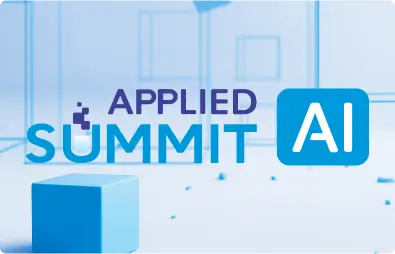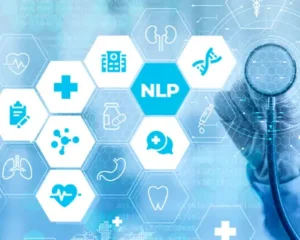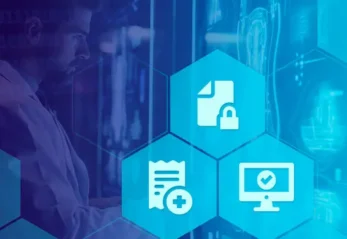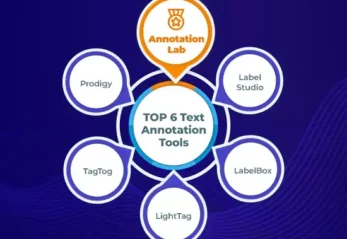Introduction
In regulated industries such as healthcare and life sciences, the integrity, traceability, and accuracy of annotated data are paramount. From clinical trial submissions to pharmacovigilance reports, regulatory bodies require evidence that each data element has undergone rigorous human review and adheres to compliance standards. Common use cases include building patient registries for FDA submissions, annotating pathology reports for diagnostic accuracy, and extracting adverse events for pharmacovigilance reporting. In many cases, regulations mandate that certain data undergo human oversight, with full audit trails and secure workflows.
The Generative AI Lab addresses this critical need by offering a comprehensive suite of features designed to ensure auditability, version control, secure workflows, and domain-specific quality checks. By seamlessly integrating AI-driven pre-annotation with robust human review mechanisms, the platform empowers organizations to meet regulatory requirements without sacrificing efficiency. Below, we explore the key capabilities of the Generative AI Lab that make it an essential tool for high-stakes annotation projects.
Full Audit Trail & Immutable Change Records
In regulated environments – especially healthcare and life sciences – every annotation, correction, or decision must be fully traceable. Regulatory bodies (e.g., FDA, EMA) expect organizations to demonstrate exactly who made each change, when they made it, and what the prior state was. Without an immutable audit trail, it is impossible to prove that data used for regulatory submissions has not been tampered with, inadvertently or maliciously. Audit logs also serve as forensic records in case of an external audit or a post-market investigation.
The Generative AI Lab maintains a complete, append-only audit trail for every task, completion, and review action. Each audit entry includes:
– Timestamp of the action.
– User identity (authenticated via Single Sign-On or local identity provider).
– Type of action (e.g., “Annotator John submitted completion,” “Reviewer Jane requested change,” “Project Owner deleted a task,” etc.).
– Immutable snapshot of the content before and after each change, so you can always revert or compare.
No user, including annotators or reviewers, can delete or overwrite audit entries once they’re recorded. Only Project Owners or Administrators have the ability to remove entire tasks (and doing so still leaves an audit record of the removal).
See the Audit Trail panel in the interface for a chronological list of all user actions for a selected task, including username, timestamp, and description of changes.
Robust Versioning of All Annotations
In regulated workflows, you must be able to compare any two points in time to understand how annotations have evolved. If a reviewer requests changes, you must show exactly why those changes were requested (i.e., what the annotator originally submitted). If an external auditor asks for proof of what data was submitted to a regulatory body, you need to recreate the exact state of every task as of a given date. In collaborative annotations, you often need to see a trail of “deltas,” not just the final text labels.
Every time an annotator or reviewer modifies a task, the Generative AI Lab automatically creates a new “completion” rather than editing in place. This means:
– Immutable Completions: The original AI-generated or human submission remains intact.
– Clone & Edit Workflow: When a reviewer requests changes, the annotator “clones” the reviewer’s annotated completion and makes edits on that new copy.
– Version History UI: In Task View → Versions tab, you can see all completions, their creators, and timestamps. You can also launch a “Show Diff” interface to highlight exactly which annotations changed between any two versions.
This approach ensures you never lose the prior state. Even if a later reviewer or admin retracts a change, you can still access the original. Diff views allow you to prove exactly what differences were introduced between an AI pre-annotation and a final, reviewed annotation.
Visit the Versions panel to view a list of each completion with user details and timestamps, and compare differences between them.
Role-Based Access Control (RBAC) & Security
Healthcare and life sciences data often contain Protected Health Information (PHI) or other sensitive information (e.g., personally identifiable information, PII). Commercial or cloud-only solutions may not satisfy organizational or regulatory requirements (like HIPAA, GDPR, 21 CFR 11). A robust RBAC system ensures:
– Only authorized users can view or edit tasks.
– Different roles – Annotator, Reviewer, Project Manager, Administrator – have distinct privileges.
– Sensitive tasks or high-risk projects can be locked down to a minimal “need to know” basis.
Generative AI Lab offers the following implementations:
– On-Premise or Air-Gapped Deployment: GAIL can run entirely behind your organization’s firewall or in an air-gapped environment, ensuring that PHI never leaves your controlled infrastructure.
– Multi-Factor Authentication (MFA) & SSO: Integrates with enterprise IdPs (e.g., Okta, Azure AD) to enforce MFA.
– Granular Role Definitions: Specific roles (Annotator, Reviewer, Project Owner, Org Admin) with fine-grained permissions for project creation, task assignment, editing, deleting, and audit log access.
– Role-Based Views: Annotators see only tasks assigned to them, Reviewers see tasks “Ready for Review,” and Managers see a consolidated dashboard of all projects.
– Encryption & Data Isolation: All data at rest in GAIL can be encrypted via your own key management system; data in transit uses TLS.
These measures help ensure HIPAA/GDPR compliance, controlled visibility, and zero data leakage. You can disable external APIs or Internet access, making GAIL suitable for handling highly sensitive data within your network.
Customizable Review & Approval Workflows
Not every annotation project follows a simple “Annotator → Reviewer → Done” path. In a regulatory environment, you may need multi-tiered reviews:
1. First Pass by Junior Annotators (e.g., medical students labeling pathology reports).
2. Second Pass by Senior Clinicians to correct or confirm complex cases.
3. Final Approval by a Compliance Officer or Legal SME to ensure regulatory compliance.
Generative AI Lab’s Workflow module lets you define arbitrary sequences of states (e.g., “To Annotate,” “In Review,” “Needs Senior Approval,” “Compliance Check,” “Completed”). Each state transition can be bound to specific roles or user lists. For example:
– State 1: “Pre-Annotate (AI).”
– State 2: “Annotator A (Junior).”
– State 3: “Reviewer B (Senior).”
– State 4: “Compliance Officer C.”
– State 5: “Locked for Submission.”
Within the Project Configuration → Workflows tab, you can:
1. Drag and drop to chain states in the order you want.
2. Assign specific roles or users to each state (e.g., only users with “Senior Reviewer” can move tasks from “Needs Senior Approval” to “Compliance Check”).
3. Configure automatic notifications (e.g., when Annotator A completes a task, Reviewer B gets an email or Slack ping).
4. Define task escalation rules (e.g., if “Reviewer B” doesn’t act within 48 hours, escalate to Manager).
This ensures that your SOP, no matter how complex, is enforced automatically and transparently.
Inter-Annotator Agreement (IAA) & Consensus Analytics
Consistency is a pillar of high-quality annotation. Even with trained annotators, disagreements arise – especially in nuanced clinical scenarios (e.g., “Does this biopsy mention necrosis or not?”). Regulators expect you to measure and document inter-annotator variability:
– Inter-Annotator Agreement (IAA): Quantifies how often annotators agree.
– Consensus Workflows: If Annotator A says “Yes” and Annotator B says “No,” who resolves the conflict? Typically, a third annotator or a committee reviews.
– Quality Control Metrics: Regulators (and internal QA teams) often require documented thresholds (e.g., IAA ≥ 0.85).
Generative AI Lab provides built-in IAA dashboards that display metrics such as Cohen’s κ, Fleiss’s κ, and simple percentage agreement for each label category. It also supports:
1. Multi-Annotator Assignment: Assign the same task to N annotators (e.g., three radiologists labeling tumor boundaries).
2. Automated IAA Calculation: Once all N completions are in, GAIL computes IAA metrics per task and per project.
3. Gap Identification: A heatmap shows which labels/categories have the lowest agreement – helping you spot ambiguous guidelines.
4. Consensus Module: If a task’s IAA is below a pre-defined threshold, GAIL can automatically route it to a Consensus Reviewer (e.g., Domain Expert) for final adjudication.
This enables quality assurance at scale, helps refine annotation guidelines, and provides documented evidence that your data meets predetermined quality thresholds.
AI-Assisted Pre-Annotation & Active Learning
A key promise of human-in-the-loop is efficiency: have AI do the “heavy lifting” on repetitive tasks, then only ask humans to confirm or correct. In a healthcare context – say, extracting diagnosis codes from thousands of unstructured clinical notes, purely manual annotation would take months. Meanwhile, purely automated extraction risks missing rare edge-cases.
Generative AI Lab offers both AI pre-annotations and Active Learning loops:
1. Pre-Annotation via LLMs or Spark NLP Models: Choose an LLM (e.g., GPT-4) or one of the 40,000+ John Snow Labs Spark NLP health-domain models to generate initial annotations on your corpus.
2. Annotator + AI Side-by-Side View: In Task View, annotators see the AI-generated labels in a light shading; they simply click “Accept” or “Edit” for each label.
3. Active Learning Trigger: Once a batch of human corrections is submitted, GAIL retrains or fine-tunes a model in the background, then re-generates pre-annotations for the next batch, improving over time.
4. Uncertainty Sampling: Configure GAIL to send only those tasks where the AI model’s confidence is below a threshold (e.g., below 0.60 probability), ensuring annotators focus on borderline cases.
This approach yields massive time savings, continuous model improvement, and higher accuracy, since humans verify every AI label.
Automated Quality Control (Consistency Checks & Model Validation)
Beyond IAA, regulatory workflows often mandate automated QC checks to catch formatting errors, missing labels, or logical inconsistencies (e.g., “If a report states ‘no evidence of disease,’ then diagnosis code C80.9 should not be applied”). In large projects, manual QC is impractical; you need scripts or built-in functions that flag anomalies.
GAIL’s QC toolkit includes:
1. Schema Validation: Before tasks are published, GAIL checks that each annotation adheres to the project’s schema (e.g., required fields, mutually exclusive labels).
2. Consistency Rules Engine: Define if/then rules (e.g., “If entity type=‘Medication’, then attribute ‘Dosage’ must be non-empty”). Tasks failing these rules appear under a “QC Failures” dashboard.
3. Model-Based Validation: Run an “NLP Evaluation” pass where a gold-standard model scores each completion; tasks with low model score vs. human annotation discrepancy are flagged for additional review.
4. Automated Outlier Detection: GAIL uses statistical checks (e.g., “This task’s annotation length is 5× median length”) to find outliers that might indicate a mistake.
These features allow you to catch errors early, reduce manual audits, and provide regulators with proof that every data point passed both human review and automated rule-based checks.
Task & Workflow Management (Assignment, Progress Tracking, Time Logging)
Large annotation projects in healthcare can involve hundreds of thousands of documents. You need:
– Flexible Task Assignment: Route tasks to annotators based on expertise (e.g., cardiology vs. oncology).
– Real-Time Progress Dashboards: Show project managers how many tasks are “To Do,” “In Review,” “Completed,” etc.
– Time Logging: Record how long each annotator spends on tasks to manage costs and forecast throughput.
– Duplicate Detection & Task Filtering: Avoid assigning the same document twice to the same person, or detect near-duplicate records to prevent wasted effort.
Generative AI Lab’s Project → Task Configuration includes:
1. Automated Assignment Rules: Based on skill tags (e.g., “Hematology,” “Radiology”), tasks can auto-assign to annotators with the matching tag.
2. Manual Reassignment: Project Managers can drag tasks between annotators if workloads shift unexpectedly.
3. Real-Time Dashboards: The Dashboard tab shows “Tasks Completed Today,” “Average Time/Task,” and a breakdown of tasks by state (Annotated, Reviewed, QC Pending, etc.).
4. Time-Spent Metrics: For each task, GAIL logs the “Annotator Start Time” and “Completion Time,” making it easy to export timesheets.
5. Duplicate/Similarity Alerts: GAIL can identify documents with very similar content and warn you before creating redundant tasks.
These capabilities provide operational visibility, help manage costs, and prevent rework by detecting duplicates.
Performance Analytics & Reporting
Regulatory submissions often need periodic updates (e.g., quarterly safety data). Beyond raw annotations, stakeholders want to see:
– Trends in Model Accuracy: “Our model’s F1 score improved from 0.78 to 0.85.”
– Annotator Productivity: “Annotator X averaged 30 tasks/day; Annotator Y averaged 20 tasks/day.”
– Gap Analysis: Where are the biggest divergences between AI and human? Which categories remain error-prone?
Under Analytics, GAIL offers:
1. Model Performance Charts: If you train a model from within GAIL, it shows training/validation ROC curves, precision/recall per label, and epoch-by-epoch loss charts.
2. Annotator Productivity Dashboards: A bar chart of “Tasks Completed per Annotator,” along with average time per task.
3. AI-vs-Human Gap Analysis: Compare AI pre-annotation vs. final human annotation with metrics like precision, recall, and a confusion matrix.
4. Project-Level Summaries: Exports to PowerPoint or PDF that you can attach to your internal compliance reports.
These analytics enable data-driven decisions, support regulatory reporting, and facilitate continuous improvement.
Multi-Modal Support & Multilingual Annotation
Healthcare data isn’t just text – sometimes it’s radiology images, EHR PDFs, handwritten physician notes (scanned), audio recordings of patient interviews, or even HTML from telehealth platforms. A regulatory submission may require extracting data from all these modalities. Additionally, clinical trials often involve sites in multiple countries, so you might need language coverage beyond English.
Generative AI Lab supports annotation of all these types out of the box. You can configure a single project that mixes text (e.g., progress notes), DICOM images (MRI scans), and audio (doctor–patient interviews).
For scanned documents (e.g., lab reports), GAIL’s integration with John Snow Labs OCR pipelines automatically extracts text layers, which you then annotate like any other text.
GAIL supports 250+ languages. If you have international clinical records, GAIL’s UI can switch annotation guidelines and category lists to accommodate Spanish, German, Mandarin, etc.
Regardless of modality, GAIL’s audit trail, versioning, IAA, and QC dashboards apply uniformly, so you can compare a text-based annotation to an image-based annotation seamlessly.
API Access & Integration
Many regulated workflows tie annotation data back into larger data-management ecosystems:
– EHR Integration: Automatically send reviewed annotations (e.g., coded adverse events) into a Clinical Data Warehouse.
– CDISC Compliance: Export data in CDISC ODM/SDTM format for regulatory submissions.
– Downstream ML Pipelines: Feed annotated data directly into in-house ML training scripts or unified data lakes.
GAIL exposes a complete RESTful API for project creation, task management, annotation retrieval, and model training. Typical uses:
1. Automatic Task Ingestion: A nightly job pulls new clinical notes from your EHR, calls GAIL’s API to create annotation tasks, then notifies annotators.
2. Automated Export: Once tasks are “Completed,” a lambda function calls GAIL’s “Export Annotations” endpoint to transform data into JSON, XML, or CDISC-ready CSV.
3. Model Deployment Pipeline: After training a model within GAIL, you can call an API to export a Dockerized model bundle – then deploy it to your on-prem inference cluster (or bring it back into GAIL’s “Playground” to test on new data).
4. Custom Dashboards: If your organization already has a custom Tableau or PowerBI environment, you can pull GAIL’s analytics via API and embed them in your corporate dashboard.
This seamless integration ensures end-to-end traceability and flexibility to connect GAIL with virtually any downstream system.
Strong Security & Compliance Layers
In regulated industries, data security is not optional:
– HIPAA & 21 CFR 11 in the U.S.
– GDPR in the EU.
– Regional privacy regulators globally.
You need an HITL platform that not only promises “secure by design” but has documented controls and the ability to deploy in locked-down environments.
GAIL’s security features include:
1. On-Prem & Air-Gapped Capability: Install GAIL on servers that have zero Internet connectivity. All PHI stays within your hospital or CRO network.
2. Role-Based Views & RBAC: No annotator can see anything outside their assigned projects. You can even obfuscate certain fields – for instance, restrict “Patient Name” so only Compliance Officers see it.
3. Encryption & Key Management: GAIL supports integration with hardware security modules (HSMs) for key storage, ensuring data-at-rest encryption keys never reside in plain text.
5. Regular Penetration Testing & Vulnerability Scans: Before each GAIL major release, John Snow Labs runs security assessments and publishes a summary of findings.
These layers provide regulatory peace of mind, data residency compliance, and enterprise-grade hardening.
Conclusion
As AI becomes increasingly embedded in healthcare and life sciences workflows, the demand for transparency, traceability, and regulatory-grade accuracy has never been greater. John Snow Labs’ Generative AI Lab meets this challenge head-on, offering a comprehensive platform that blends state-of-the-art AI with the governance, control, and human oversight that regulated industries require.
By delivering features like full audit trails, version-controlled annotations, customizable review workflows, role-based access, inter-annotator agreement analytics, and on-premise deployment, the Generative AI Lab ensures organizations can accelerate AI adoption without compromising on compliance. It’s not just a labeling tool – it’s a production-grade environment purpose-built for teams that need to prove their data is complete, accurate, and defensible.
Whether you’re annotating for clinical trials, building real-world evidence datasets, curating safety signals, or extracting structured data from unstructured reports, the Generative AI Lab gives your team the infrastructure to do it at scale – efficiently, securely, and confidently.
To learn more, visit the Generative AI Lab homepage, explore the product documentation, or review case studies from organizations already using it in production.






























